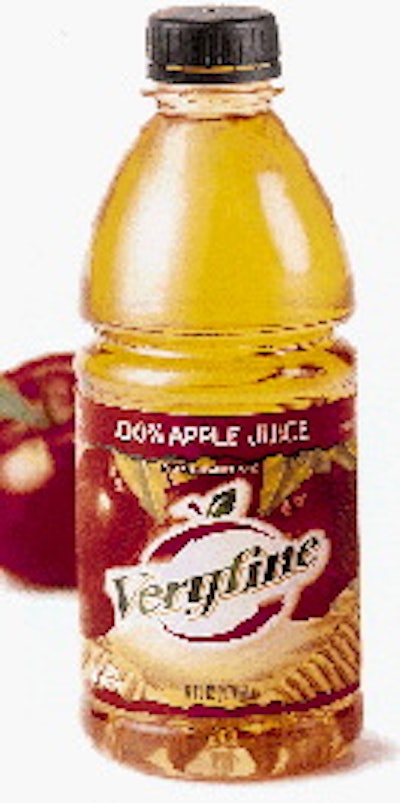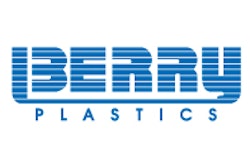
"It's a neat grip that makes us different from everybody else out there," says Peter Colby, trade marketing manager for the special segments group at Veryfine. "We think a ninety-six-ounce plastic bottle is easier to pour when the grip is near the top." Veryfine uses the innovative bottle for shelf-stable orange juice, grapefruit juice and apple/strawberry/banana Quenchers®, all from concentrate.
The bottle is injection stretch/blow-molded of polyethylene terephthalate and heat set by Graham Packaging (York, PA). It represents Graham's response to a request by Veryfine for a 96-oz PET bottle having a grip that's consumer friendly and that would not interfere with full-wrap labeling equipment already in place. Veryfine fills the new bottle on a line used for a variety of PET bottle sizes, from 32 to 128 oz. Weight of the bottle is in the 111-g range, though a final spec is still a work in process.
In addition to wanting its new bottle to be easy to handle and pour, the Westford, MA, beverage marketer also wanted a bottle as distinctive and brand-specific as possible. So the Veryfine logo is molded into the shoulder on both front and back. Cut labels, applied by Veryfine with cold glue, are supplied by the Owens-Illinois Label Div. (Bardstown, KY). The 4-mil Dura-Plas(TM) labels consist of polystyrene/foamed PS that's adhesive laminated to reverse-printed polypropylene. Printing is offset in six colors.
Labels are applied in register so that the Veryfine logo on the label is always in register with the molded-in logo on the shoulder. The 43-mm injection-molded PP closures are from Kerr/Sun Coast (Sarasota, FL).
Also being introduced by Veryfine is a new 16-oz multilayer plastic barrier bottle the company is marketing as VeryFresh(TM). According to Steve Rowse, vice president of foodservice and vending at Veryfine, the five-layer structure has much better oxygen barrier properties than the PET/EVOH/PET/EVOH/PET bottle the firm has used for hot-filled single-serve 16-oz shelf-stable beverages since 1994. That means Veryfine can add oxygen-sensitive citrus products like orange and grapefruit juice to the line, something it could not do with the previous bottle. "We're looking at a minimum of six months' shelf life, and we're fairly sure it will be more than that."
Both the old and the new bottles are produced by Continental PET Technologies (Florence, KY). Presumably the bottle is coinjection stretch/blow-molded, but neither CPT nor Veryfine would identify the barrier material or discuss container cost. But they say that more than one-third of the bottle consists of post-consumer PET and that it is recyclable. Beginning late first quarter next year, the new bottle will replace its PET/EVOH predecessor.
























